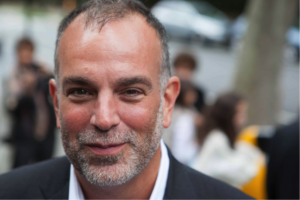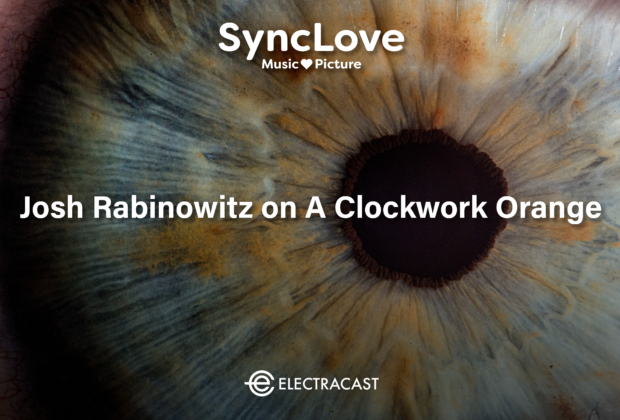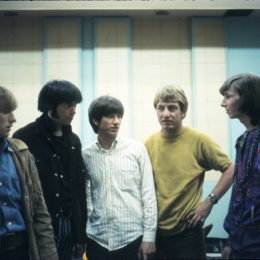SyncLove.com is a new channel from sync licensing and music discovery platform SyncFloor, which invites production professionals to dive into their favorite moments in films and share the scenes that changed the way they think about music for picture. With in-depth interviews, SyncLove offers good reads and intriguing insights about what works in sync, and how powerful the combination of music and picture can be.
The SyncLove guest contributor for this post is Josh Rabinowitz. Josh is an industry leader with a profound passion for the ever changing digital and creative content landscape. His past experience as the EVP/Director of Music for Grey Group has put him front and center in the production and supervision of over 10,000 tracks for film, TV, brands, and major labels globally. Millions of people have heard his work. Josh is currently the owner and founder of Brooklyn Music Experience, a music consultancy, and he is also a professor at The New School in New York where he teaches a course entitled “Music in the Media.”
Josh has chosen A Clockwork Orange as the highlighted film and soundtrack for discussion. He points to the magic of juxtaposition: when done right, it can transform the meaning of both the actions on screen and the music we hear, heightening the emotional resonance and opening our eyes to new, deeper interpretations and nuances. In our chat below, Josh breaks down when it works, when it doesn’t, and how A Clockwork Orange’s trenchant use of juxtaposition inspired him.
Before we dive specifically into A Clockwork Orange, tell us about what pairings of music and film shaped you.
The pairing of music and film opened my eyes to what music could do with a piece of media. You have this scene, concept, or visual which has a value of 1, then you add music that’s +1 more, but the visceral creative result may equal 4 or 10 or even 27,000. That’s the power of music.
When I grew up in the 80s, most of the interesting conceptual music in media placements were happening in film. The films I really loved were what you would then classify as independent; they had experimental depth, and weren’t necessarily intended for a mass audience. Jim Jarmusch, for example, was fiercely independent and used music extensively, as well as the aura of musicians, in his films. Some musicians were playing themselves, and some were actors, but Jarmusch always had interesting and distinctive music that reflected his aura. Stranger than Paradise, Night on Earth, and Down by Law all used music in a unique way.
Another film that rocked my world was The Graduate. That film basically created the role of the music supervisor, though that wasn’t an official title yet. The film had an amazing editor who apparently placed Simon and Garfunkel on his cut, and the director Mike Nichols was then able to get them involved. It wasn’t your run-of-the-mill film and the music was super powerful. It stuck with me. I did some research and learned that “Mrs. Robinson” was altered to fit the script. They adjusted the music to fit the film so you hear a different version of some of the album cuts. That resonated with me as well.
I also love really good traditional scores, like Bernard Herrmann’s scores. But when music is created for one reason and then is used by a film in a different way, it can take on a whole new meaning.
Music guided many directors I admire, like Wes Anderson and Quentin Tarantino, in the way they came up with their ideas. I love when music drives the ideation. I also love when people let music drive a scene but as a juxtaposition.
I’m also a big Martin Scorsese fan, and the use of music in Goodfellas was as high-end as it gets. There’s this moment when a hippyish, warm, and uplifting Donovan song comes on, “Atlantis”, not what you expect to go with an incredibly violent scene. The power of the juxtaposition comes from the fact that it's not the music you innately assume you should be hearing, but it aligns, or even misaligns, with the visuals in a certain way, and that takes you to a different responsive place. You experience the concept and the narrative in a new way. It’s a total and utter response shifter and it fights with your normal perception of music in general. Something similar happens in The Graduate with “Sound of Silence.” The moment in the film was bittersweet, or even uplifting though the song had a darkness. But it also created a feeling of enlightenment and spiritual intensity that manifested in a really artful way.
Juxtaposition certainly comes up in A Clockwork Orange. Before we dive into that, let’s talk about the film itself briefly. Say you meet a visitor from another world and have two minutes to describe A Clockwork Orange. What would you say?
I haven't seen the film in several years, but I have seen it about 20 times. It takes place in London and is about misguided youth, presenting this dystopian view of life in the 60s and 70s, though it gets much deeper. It gives us this futuristic look forward into how things may be and plays to the darker side of humanity and people’s fears. It deals with violence in a very distinctive way that will either offend or awaken you. It deals with the justice system grappling with the violence of these alienated young people. The way Stanley Kubrick directed it, the way the music was used, it bends and messes with your perception of cinema.
Tell us about a scene in the film where the use of music truly moved you
There were many. In terms of juxtaposition, there’s a scene where super intense and awful violence happens. The lead character and his “droogs” attack this random home and brutalize the inhabitants whilst actually singing “Singing in the Rain.” Some people feel that it softens the violence, but it also puts you in the position of seeing it from the twisted, warped perspective of the perpetrator, which is confounding on many levels.
They use the 4th movement of Beethoven’s 9th symphony, the Ode to Joy, music that the ultraviolent main character Alex (played by Malcolm McDowell) loves. It’s performed in the standard orchestral way as well as arranged on experimental synths. The music here is particularly powerful as they are trying to convert him from his ultraviolent tendencies. There’s also the motif that's the main theme for the main character and reappropriates this piece by Purcell, but arranged on synths by synth pioneer, composer, and performer, Wendy Carlos, who was also the first to use the vocoder in film composition.
In all of these scenes, it’s not just about throwing something together; it’s about the thoughtfulness to make it work. They’re using the most famous works in Western classical music, including Beethoven and works by Rossini, arguably some of the best music ever written. It’s high art, and it’s ballsy and risky to do that. People try all the time, but it doesn’t always connect. When it does, however, it resonates exponentially in a pretty deep and distorted way.
If you could add music to the film’s soundtrack, what would you add?
I wasn’t a classical music geek, but at the time I saw the film, I was really into it, as well as funk and soul and reggae and jazz and rock. The filmmakers used those classical pieces so well, that it never occurred to me to think they missed something. I’ve been in this world of music in media for such a long time as a music supervisor and a music producer, so when filmmakers do miss, I instinctively think of other options that I felt could have worked better. But the pairing of music and visuals was so well done in A Clockwork Orange, that thought never crossed my mind. They really got it right. It was, in a word, brilliant!
Has this juxtaposition effect been used well in the ad space?
The ad space isn’t great at juxtaposition. They’re not very ironic. But there are some times when ads have recontextualized a song in a way that was really effective. For example, Volkswagen did a car spot in 1999 or 2000 for the Cabriolet that used Nick Drake’s “Pink Moon.” The song itself is about a depressed guy on heroin, but the music was an unexpected and powerful choice that made for a beautiful and inspired commercial. That spot opened the floodgates for lots of indie artists to get involved in media and led many to re-assess the possibilities of licensing their music to an ad.
What’s something fun you’re working on now?
I’m really excited about a project that started in January in New Orleans and has been recently completed, working with Tank & the Bangas on a cover of "What the World Needs Now" - an American classic song. The band brought their friends together, all these musicians and spoken word artists and kids. We did some live footage of the recording, and it’s really beautiful and meaningful. It was gratifying to use my expertise to bring an important emerging band to the table to do an amazing song that took the concept of the song to another level.

Another project I just finished was the cover of a song not a lot of people had heard. The different musicians I worked with to produce the track had never heard of it. They loved it. We had a great version of it that will be used in an ad for a specific format. Another track is about to get released this week or next week is also fun. It’s a cover of a Broadway standard, but one that modernizes it into a semi-aggressive, not angry but energized version of a show tune.
In a way, I like doing covers so much because of films like A Clockwork Orange. A song has one context, cachet, and associative power, and then you recontextualize it - it can be a very potent connection with the viewer. That film really inspired me and moved me in a way that I never thought, or even remotely conceived, I could be moved.
I’ve been teaching at the university level for 14 years, and juxtapositions are always part of my class discussions and lectures every semester - how they’re treasured yet incredibly difficult to execute. It’s a challenging concept, but if you’re a creative thinker, you can do it. There’s nothing wrong with an emotional musical bullseye, of course. It’s a gifted craftsperson who can find, compose, or produce amazing music that cuts in and out of a scene or narrative perfectly. That’s certainly fun to work on. But how do you take something that does that in a way that’s not dead on or obvious, but completely distinctive? That takes gravitas.
On the ad side, you’re dealing with an array of clients who want to be resonant and relevant. But some are willing to let their music team take the risk. I’ve tried to do that for years and I’ve been able to do some great covers which satisfied that urge for me.














